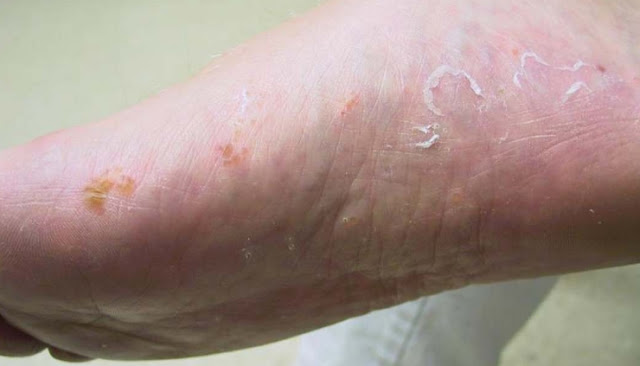The treatment of athlete's foot should not be stopped arbitrarily because athlete's foot reoccurs easily.
athlete's foot is a common disease caused by a fungus infection in the skin. Mold fungi have a lot of breeding power during high temperature and humidity, so they should be more careful in summer.
The athlete's foot is divided into an "angle type" in which the keratin looks thick and falls like a powder on the bottom of the "so-saturated" foot, which splits between the toes without inflammation and results in a "ground-type" small blisters that peel off.
Ground-toed athlete's foot is more likely to develop in areas where air is not flowing because it is as close as between the toes. If you get epileptic athlete's foot, it becomes wet and itchy because it peels off.
Small blisters often form the middle part of the sole of the foot or the edge of the foot and are itchy. If athlete's foot is prolonged for a long time, the entire soles of the foot accumulate. Scratching these keratin drops like a powder, which is an alveolar athlete's foot.
Don't just scratch with a scratch or itch. This is because the skin with athlete's foot is in a state where the skin barrier is weakened, and if scratched, the skin can easily become inflamed by bacterial infections. If symptoms worsen, such as getting sick or swelling of the skin, recovery slows down.
athlete's foot must be treated under professional care. However, many people try untested folk remedies such as vinegar and icebergs because they are a common disease. In addition, it is common for people to buy medicine and apply self-value for themselves.
If you don't get athlete's foot treatment for a long period of time, it can get worse and spread to other places such as your hands and feet, back, feet, and torso. If you practice unnecessary folk remedies, your skin can be damaged or secondary infections, which can lead to serious consequences.
athlete's foot is treated by applying anti-bacterial agents once or twice a day and taking oral medication. If the symptoms seem to have improved and the treatment is stopped arbitrarily, it will easily recur and should be fully managed. Also, early treatment has good prognosis, so if you suspect athlete's foot, you should go to the hospital immediately.
Since athlete's foot is a disease that is prone to relapse, it is important to proactively manage and prevent athlete's foot even after a complete recovery. In particular, it is recommended to sterilize or dispose of the shoes or socks after treatment, as they may be caused by the germs remaining in the shoes or socks.
The feet should be washed clean every day and dried to the point of water between the toes, and athlete's foot is contagious, so you should pay attention to personal hygiene without sharing towels, socks, shoes with others.




0 개의 댓글:
댓글 쓰기